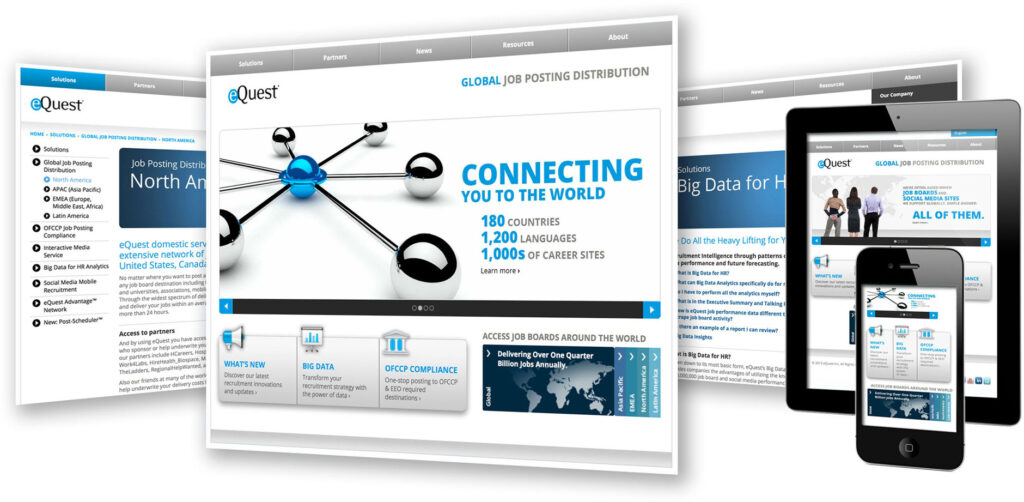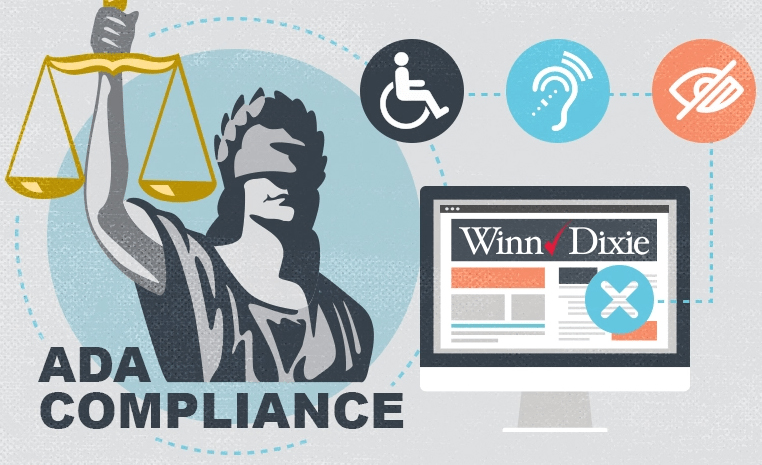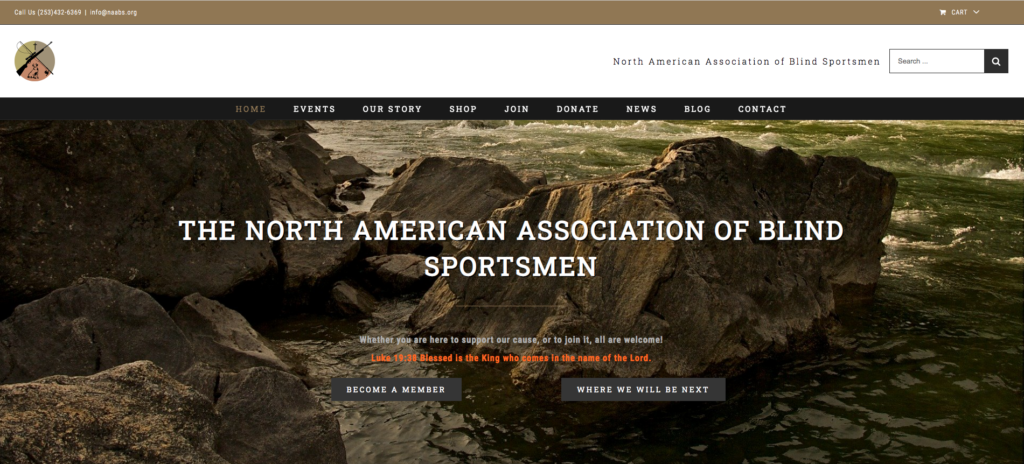Updated March 10, 2023
Reading Time: 5 minutes
What Is Web Accessibility and Why Is It Important?
Website accessibility, also commonly referred to as eAccessibility, is a term used to describe the inclusive practice that ensures all types of users — including those with disabilities — can easily navigate and use a website. To put it simply, it means that a website doesn’t have inherent barriers to use. This is true regardless of whether a user has physical or situational disabilities or socio-economic restrictions on bandwidth and speed.
There are many types of disabilities, and webmasters need to take them all into account when designing and maintaining a website. This can be a challenge, to be sure — but it's also critically important to make sure that your pages are… Click To TweetTypes of Website Accessibility

All told, there are a few different elements to be concerned with when it comes to the types of website accessibility. These include but are not limited to ones like:
- Site accessibility of website content: A site should make it easy to read and navigate content, with images, links, and videos as prime examples. Doing so satisfies the ADA as well as overall user experience.
- Accessibility of website design: The structure of a site should be flexible enough to allow for differences in user preferences. One user may be color-blind while another hearing impaired. These users should still enjoy the same high-quality user experience.
- Site accessibility for interaction: Users should have at least two options for interacting with a website. For example, they should be able to use mouse or keyboard shortcuts.
- Site accessibility for cognition: A website should meet cognitive level requirements by making things easy to understand, regardless of education or reading level. Examples of helping visitors read and understand a website would be: using subheads for scanability, parsing related content into simple sentences and paragraphs, creating infographics to communicate concepts, etc.
Site owners, content creators, and web developers should work in tandem. Your aim is to fulfill ADA requirements to ensure all content is available to everyone — regardless of their abilities. Accessibility is estimated to increase in importance, with increasing regulatory emphasis on compliance. To help you navigate website accessibility and usability, download our Website Checklist eBook for easy reference.
ADA Compliance

The American Disabilities Act (ADA) was officially signed into law in July 1990, which prohibits discrimination against people with disabilities. The act requires that any website open to the public must be accessible, regardless of ability, especially as it relates to employment opportunities, purchasing goods and services, and participating in state and local government programs.
The law applies to businesses and nonprofits serving the public, and affects states that all content is readable by a screen reader, providing alternate text for images, or having a page that is easy to navigate.
There are additional reasons why an accessible website is essential, mostly revolving around the user experience. For example, if a page isn’t accessible and someone with a disability tries to access it, they may not understand the content or could end up getting lost on a page or site. Both of these missteps can harm your larger brand reputation.
Is ADA Compliance a Legal Requirement?
Yes, digital accessibility is legally required under the ADA. Website owners and web designers need to make sure their web pages are accessible to all people with varying abilities.
What are Some Safety Concerns Related to Website Accessibility?
Internet accessibility has yet to be fully implemented. Thus, it’s undoubtedly a concern that people with disabilities may not be able to use all the features of a website, ultimately harming their ability to fully interact with your brand. This could include not being able to see or hear what’s on the page, not being able to navigate around a page, successfully making a purchase, or contacting your brand.
Is Your Website ADA Compliant?
If you’re not sure you’ve sufficiently complied with ADA’s guidelines, you can use this website accessibility checker or do accessibility testing to find out. Note: the following checker is meant to be a guide, not a legal checklist. Please refer to the the official ADA site for specific legal accessibility requirements that may affect your website.
Web Accessibility Guidelines
These 10 guidelines will help you create an accessible website:
Accessibility Websites to Draw Inspiration From

Looking for some inspiration or additional guidance in creating an accessible website? Check out these ADA compliant website examples:
- The American Foundation for the Blind – They provide different guidelines, video tutorials, and accessible templates that can be used to build a website that is ADA compliant.
- WebAIM – WebAIM provides actionable guidelines for your website. It also offers disability-related news and links to other sites. There are templates for people with visual impairments, motor impairments, auditory impairments, and cognitive disabilities. They also offer website accessibility checkers so users can find out if their site is compliant with ADA requirements.
- AbilityNet – AbilityNet exists to improve the lives of people with disabilities and older people by helping them to use computers and other digital technology. This includes providing access to information, training, and support.
Website Accessibility Apps
All the best practices outlined above are important because they help fulfill the requirements outlined in the ADA. But more than that, it is our legal obligation to make sure that content is available to everyone in the online community – which in and of itself is the most crucial benefit of all.
On your journey to create a more accessible website, you may also consider an app that serves as an overlay to your website. While it is not a full-proof solution, it is cost-effective to be more compliant. We researched affordable ways to modify existing sites without costly coding or redesign. That’s why we became an affiliate of accessiBe. While we get a nominal reward, we would use (and recommend) the plugin regardless of our affiliation.
What is accessiBe?
accessiBe is a SaaS solution that works with all types of content management systems (CMS) such as WordPress,SquareSpace, WooCommerce and others. It’s designed to help users with various disabilities navigate your website.
When installed and configured, the accessiBe icon appears on the website and expands once clicked upon. Since accessiBe is a visual system, it can be customized to match your brand’s color palette. The plugin also works behind the scenes for visitors that use a screen reader. This functionality enables users to navigate the website without having to “see” the content.
You can see accessiBe in action throughout our website; its located in bottom right corner of every page. If you’d like help adding accessiBe or refreshing your WordPress website, we’re happy to help. Schedule a no-obligation meeting and we can discuss your WordPress needs.
Frequently Asked Questions
• Is Web Accessibility a U.S. legal requirement?
Yes, web accessibility is legally required according to the Americans with Disabilities act (ADA), a civil rights law signed in 1990. The law accommodates all people with disabilities and how they access your business (physical locations, website, etc).
• What happens if your website is not ADA-compliant?
If you do not comply with the accessibility guidelines stated on the ADA’s website, you risk litigation from parties who claim they cannot easily navigate your website or do business with you. According to the Wall Street Journal, lawsuits claiming digital violations are on the rise.
• How do SEO and accessibility work together?
If you do not comply with the accessibility guidelines stated on the ADA’s website, you risk litigation from parties who claim they cannot easily navigate your website or do business with you. According to the Wall Street Journal, lawsuits claiming digital violations are on the rise.
